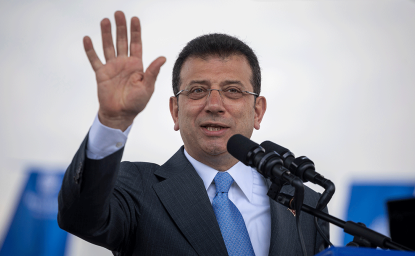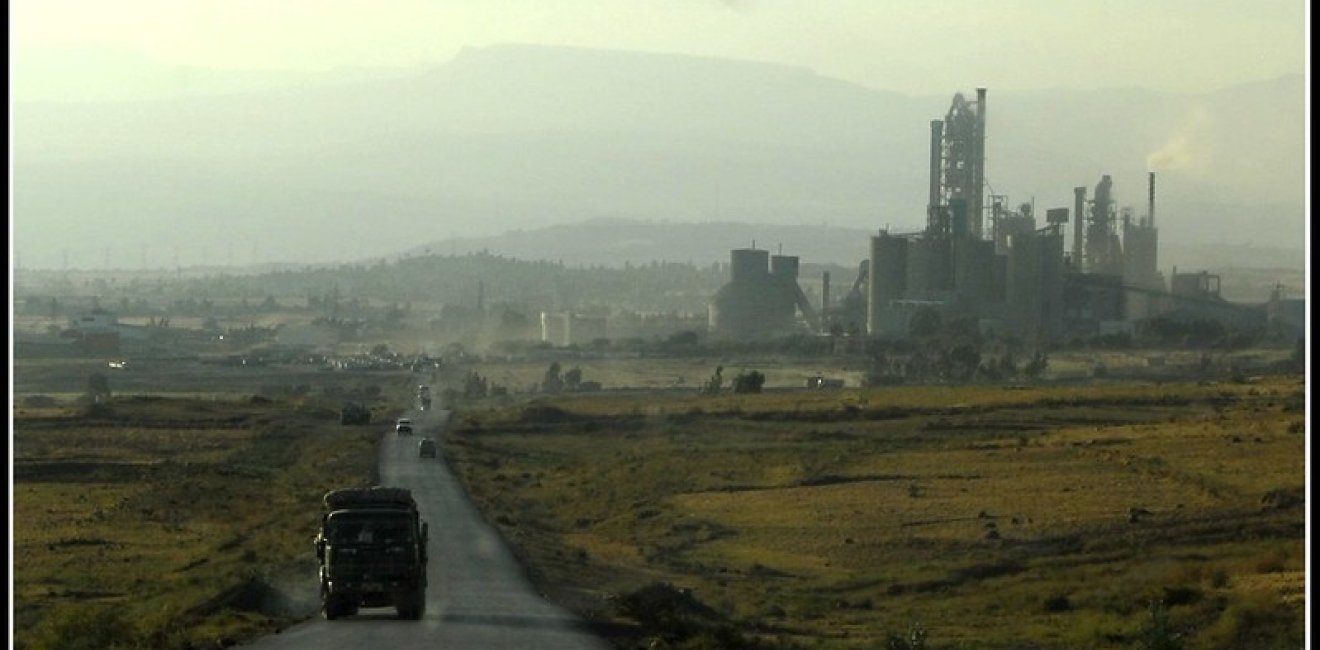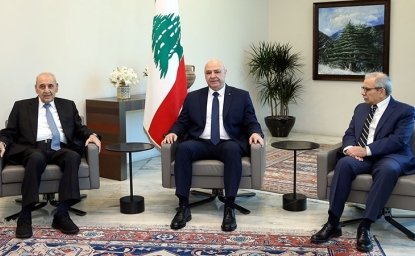Twenty-six years ago, Ethiopia defied warnings about the dangers of tribal politics and embraced wholeheartedly a political system based on ethnic federalism that now threatens to tear it apart. The country was divided into nine regions, each named after its main ethnic group (aside one) and given the status of self-ruling-states, opening up a fierce competition among primarily the three largest groups for national primacy.
Whether the choice of ethnic federalism was driven by an excess of faith in Marxism-Leninism ideology or sober realpolitik is a question American political scientists still debate today. Those responsible were fervent Marxist-Leninists who embraced Soviet Communist thinking in calling different ethnic groups “nations” and “nationalities” endowed with the right to self-determination. But Ethiopia’s unsettled political situation in the mid-1990s when the present constitution was adopted—there were already “liberation fronts” in several regions-- favored federalism of some kind to keep the country’s main feuding ethnic groups together in one country.
Since the overthrow of Emperor Haile Selassie in 1974, Ethiopia has been wracked by almost constant civil wars plus a socialist revolution, two coups, and numerous droughts, famines, and pandemics. Along the way, however, it miraculously also achieved Africa’s highest GDP growth rate, averaging between 8 and 11 percent annually in the decade before 2016. The United States has been a major source of foreign aid, pouring $13 billion into various health, education, humanitarian, and economic programs over the past 20 years, according to the U.S. Agency for International Development.
I was based in Addis Ababa as the Washington Post’s Africa correspondent at the time of Haile Selassie’s downfall and reported on the subsequent political turmoil there for three years (1974-1977). I then returned in 2010 and 2019 on visits during which I witnessed ethnic federalism’s malign centrifugal forces at work on trips to the Amhara, Oromo, and Tigrayan “nations.” All were working feverishly to attract foreign investors, particularly Ethiopians living in the United States, and to consolidate ethnic control over their regions, often at the expense of local minorities.
Finally, in 2015, ethnic strife broke out openly around the capital, Addis Ababa, as its authorities sought to annex surrounding Oromo lands to make way for its booming population. By the time of my last trip, ethnic clashes had become all too common, often involving the cleansing of minority ethnic groups living in regions ruled by the dominant one.
Sadly, now, the debilitating consequences of ethnic federalism are all too apparent, risking decades of economic progress and, once again, Ethiopia’s unity.
Tigrayans, the country’s former rulers, have risen up against the Oromo, historically the empire’s downtrodden who now dominate the central government and national army and have set out to quell Tigray’s 9-month-old rebellion.
The numerical odds certainly do not favor the Tigrayans, who account for just seven percent of Ethiopia’s 115 million citizens compared to the Oromo’s 35 percent and the Amhara’s 28 percent. But it was the Tigrayans whose steely fighters led the uprising in 1991 to overthrow the bloody regime of Mengistu Haile Mariam, who had spearheaded the military cabal that toppled Haile Selassie in 1974 and unleashed a Chinese-inspired socialist revolution.
At the start of the ethnic clashes in 2015 around Addis Ababa, the main protagonists were residents of Oromia, which surrounds the capital, and the Tigrayan-dominated central government led by Prime Minister Meles Zenawi. He had been a senior officer in the Tigrayan People’s Liberation Front (TPLF) that had led the Ethiopian People’s Revolutionary Democratic Front (EPRDF) in overthrowing the emperor and abolishing the centuries-old Ethiopian monarchy.
Zenawi was born in Adwa in the Tigray heartland and, though an Ethiopian Orthodox Christian, was credited with founding the Marxism-Leninist League of Tigray. He was also the main architect of ethnic federalism and engineer of the peaceful secession of Ethiopia’s northernmost Eritrea region, putting an end to a 30-year-old war for independence there. He died of encephalitis while undergoing treatment at a hospital in Brussels, Belgium in 2012.
In contrast, Ethiopia’s current prime minister, Abiy Ahmed, hails from a Muslim Oromo family from the far south and is the first from his ethnic group to rise to national and international prominence. He is unique in other ways, too. He became a Pentecostal Christian while his wife is an Orthodox Christian, the main faith of the Amhara. He is the first Oromo to serve as prime minister. Since his time in power starting in April 2018, he immediately gained international prestige by putting an end to a 20-year-long border war with Eritrea, for which he was awarded the Nobel Peace Prize. He also restored multi-party democracy after decades of Tigrayan-dominated rule under the EPRDF.
But now, Abiy has lost control of Tigray after the national army was run out of its capital, Mekelle, and in retreat elsewhere in that once again famine-afflicted region. Abiy faces the further fragmentation of Ethiopia after its loss of Eritrea in 1991. In theory, at least, Tigray has the right to succession, too. Reflecting the country’s embrace of old Soviet Communist theory about governance, its constitution states in Article 39 that “every Nation, Nationality and People in Ethiopia has an unconditional right to self-determination, including the right to secession.” A nation is defined as a group of people sharing the same language, a common culture, and sense of identity. With the creation of the Sidama Region last year, Ethiopia now consists of ten “nations” and statelets.
This “right to secession,” to be sure, is circumscribed with preconditions that made it difficult to carry out. Any “nation” seeking independence has to win the approval of two-thirds of Parliament’s upper house representing all nations, plus a majority of voters in a nationwide referendum.
Realpolitik is an even more serious obstacle. Tigray’s rebel leaders are already talking about seeking independence. But Tigray is landlocked and sandwiched between a now hostile Eritrea that tried to help Abiy’s government crush its rebellion and the rest of Ethiopia with which it is still at war, and not just with the central government. A militia belonging to the Amhara region just to the south is trying to take back a slice of Tigray once included in the Amhara region.
In theory, Tigray might make peace with Eritrea, whose rulers are also Tigrayans and have struggled to build a viable independent nation. In reality, Eritrean soldiers are blamed by Tigrayans for engaging in widespread war crimes against civilians in the current fighting, making such a peace unlikely any time soon.
Meanwhile, the Biden administration is urging an immediate cease-fire to rush humanitarian aid to hundreds of thousands of starving Tigrayans isolated now inside their war-ravaged region. It is also calling for the withdrawal of Eritrean and Amhara forces from Tigray and demanding that “neither the internal nor external borders of Ethiopia will be changed by force or in contravention of the constitution.”
The constitution clearly does allow for secession, but realpolitik and economic necessity may lead to some kind of new confederation between Tigray and the rest of Ethiopia, or less likely with Eritrea. At this point, the ultimate fate of Tigray seems very much up in the air.
Author

Former Washington Post Middle East Correspondent

Africa Program
The Africa Program works to address the most critical issues facing Africa and US-Africa relations, build mutually beneficial US-Africa relations, and enhance knowledge and understanding about Africa in the United States. The Program achieves its mission through in-depth research and analyses, public discussion, working groups, and briefings that bring together policymakers, practitioners, and subject matter experts to analyze and offer practical options for tackling key challenges in Africa and in US-Africa relations. Read more

Explore More
Browse Insights & Analysis
Greenland’s New Governing Coalition Signals Consensus

Myanmar’s Junta and the 2026 Elections: A Fig Leaf for Legitimacy?


